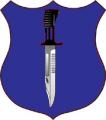I find myself in the unusual position of agreeing with both of you on four salient points:
1. MW offers many benefits on paper but is devilishly hard to do in practice; I'll add: the increased training at all levels required to attain true proficiency is possibly not worth the cost due to the fact cited in number 2. below.
2. MW is not a replacement for attrition or other forms of warfare but is a methodology to be used when possible.
3. The USMC (Full disclosure; been there, done that) is prone to frontal assaults and really needed an antidote to that. The US Army suffers from the same disease to a slightly lesser extent and also jumped on the wagon -- well, on the tailgate of it anyway. In both cases, the adoption was primarily but not totally lip service while a strong strain of skepticism about it was maintained by senior people who feared loss of control and (wrongly, IMO) excessive casualties. I'll again add: this is partly due to a tacit knowledge that our training is only marginally adequate thus leading to an innate distrust or lack of total faith in subordinates taking the 'correct' actions.
4. Both services have made some strides toward decentralization (thanks primarily to Afghanistan and Iraq) but still tend to hold the reins a little too tightly.
Thus we (both services) have a doctrine which says one thing while we actually do something a little different -- and more cautious...
Nothing new in that, been that way since 1949 at least in my observation.

Obviously some paraphrasing in there and I do not mean to pin either of you to my choice of words. My additions re: training are my own and not inferred from either of you. However, my sensing is that you two are closer than you seem to think.













 "A Sherman can give you a very nice... edge."- Oddball,
"A Sherman can give you a very nice... edge."- Oddball, 

Bookmarks